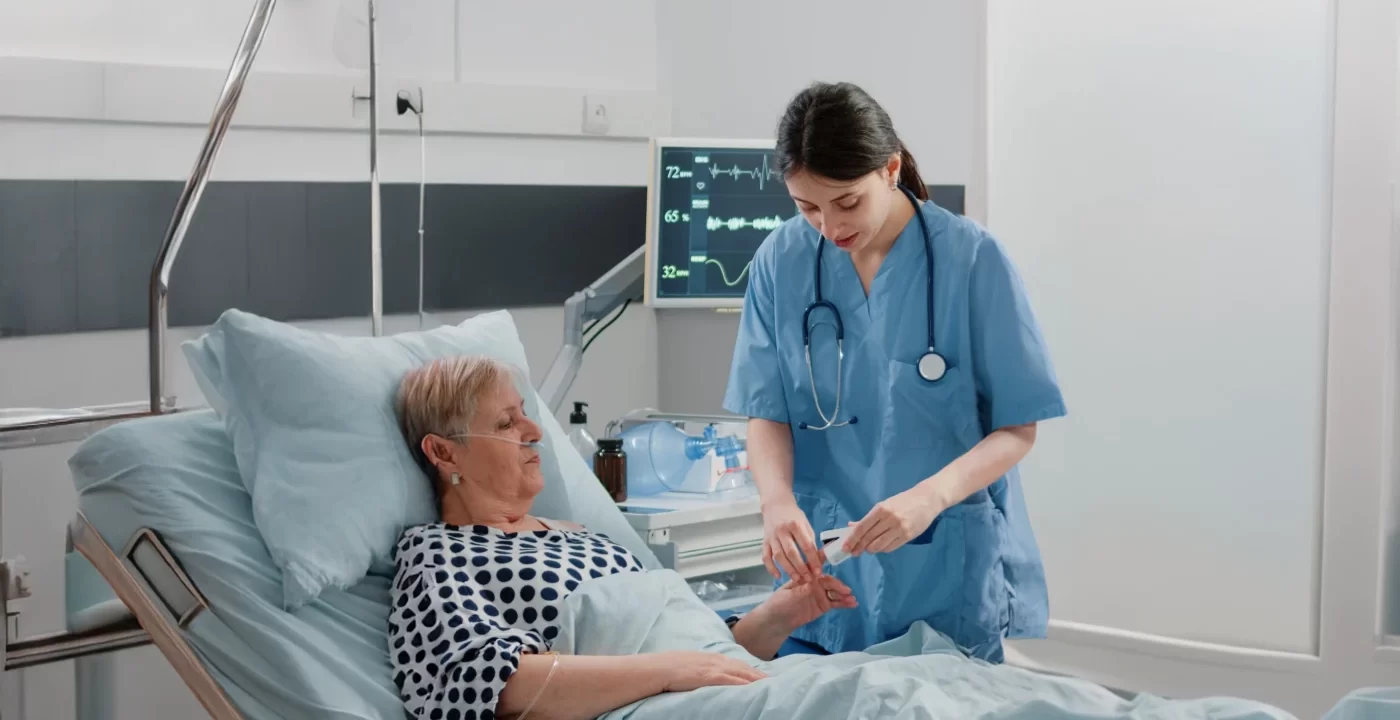
Hey there! We know that taking care of a loved one or a senior who has had a stroke can be quite challenging, but we’re here to help you through it. In this article, we’ll discuss how you can make the journey of caring for a stroke patient at home more manageable, both for you and the person you’re caring for. We’ll talk about the essentials of stroke patient care, how to prevent complications, and ways to make the patient’s life more comfortable. We’ll also share some insights on how to care for yourself during this process. And remember, even though the situation may be tough, you’re doing a fantastic job, and we’re here to support you every step of the way.
Understanding Strokes and Their Effects
First, let’s briefly discuss what a stroke is. A stroke occurs when the blood supply to a part of the brain is disrupted, either by a blood clot (ischemic stroke) or a burst blood vessel (hemorrhagic stroke). This can cause brain damage, which can lead to various physical and cognitive impairments.
The impact of a stroke can vary greatly, depending on the severity and the area of the brain affected. Some common effects of a stroke include:
- Physical weakness or paralysis, often on one side of the body
- Cognitive and memory difficulties
- Speech and language issues
- Emotional changes, including depression and anxiety
- Challenges with daily activities such as dressing, bathing, and eating
- Difficulty swallowing
With this understanding, let’s move on to how to deal with a stroke patient at home and provide the best care during their stroke recovery process.
1. Creating a Safe and Comfortable Environment
-
Home Modifications:
Make sure the patient’s living space is safe and accessible. This may include installing grab bars, removing tripping hazards, and rearranging furniture to create wider pathways.
-
Adaptive Equipment:
Consider using adaptive equipment to aid the patient’s mobility and independence. This can include a wheelchair, walker, or cane, as well as aids for bathing, dressing, and eating.
-
Comfortable Atmosphere:
Create a calm, soothing environment for the patient. Use soft lighting, comfortable bedding, and familiar belongings to help the patient feel at ease.
2. Preventing Complications
-
Monitoring Vital Signs:
Regularly check the patient’s blood pressure, pulse, temperature, and respiratory rate. Notify their healthcare team if you notice any concerning changes.
-
Preventing Infections:
Practice good hand hygiene and encourage the patient to do the same. Keep their living space clean and well-ventilated.
-
Skincare:
Check the patient’s skin for signs of pressure sores or irritation, especially in areas with limited mobility. Reposition the patient regularly and use pressure-relieving cushions or mattresses as needed.
-
Emotional Support:
Provide emotional support and encouragement to the patient. Engage them in social activities, and consider seeking counseling or support groups for both the patient and yourself.
3. Managing Daily Activities
-
Personal Hygiene:
Help the patient maintain good personal hygiene. Assist with bathing, grooming, and toileting as needed. Use adaptive equipment to make these tasks easier and safer.
-
Nutrition:
Ensure the patient has a healthy, balanced diet that meets their nutritional needs. Consult a dietitian for guidance on appropriate meal plans, especially if the patient has difficulty swallowing.
-
Medication Management:
Keep track of the patient’s medications and ensure they are taken as prescribed. Use pill organizers, alarms, or medication management apps to help with this.
-
Exercise and Rehabilitation:
Encourage the patient to engage in regular physical activity and therapeutic exercises as recommended by their healthcare professionals. This can help improve muscle strength, coordination, and overall well-being.
-
Communication:
Be patient and supportive when communicating with the stroke patient. Use clear, simple language, and consider using visual aids or gestures to help with understanding.
4. Assisting with physical therapy and exercises
Physical therapy is a critical component of stroke recovery. To help your loved one regain strength and mobility, make sure to:
- Attend therapy sessions with them to learn the exercises and techniques.
- Encourage and assist them with daily exercises at home, following the recommendations of their therapist.
- Be patient and understanding, as progress may be slow
5. Supporting communication and cognitive recovery
Stroke can impact a person’s ability to communicate and think clearly. To help them improve in these areas:
- Practice speech and language exercises, as recommended by a speech therapist.
- Engage them in conversations and encourage them to express themselves.
- Play memory games and provide cognitive stimulation through puzzles, reading, or other activities they enjoy.
6. Encouraging independence
While it’s essential to support your loved one through their stroke recovery, it’s also important to encourage their independence whenever possible. Help them regain their sense of autonomy by:
- Encouraging them to perform daily activities on their own, even if it takes a little longer.
- Offering choices, such as what to wear or what to eat.
- Supporting their efforts to learn new ways of doing things, like using their non-dominant hand for certain tasks.
7. Being mindful of emotional well-being
Caring for a stroke patient’s emotional well-being is just as important as addressing their physical needs. Help them cope with the emotional challenges by:
- Offering a listening ear and providing emotional support.
- Encouraging them to share their feelings and frustrations.
- Suggesting they join a support group or seek professional counseling if needed.
Caring for Yourself as a Caregiver
-
Take Breaks:
Give yourself regular breaks to rest and recharge. This can help prevent caregiver burnout and maintain your overall well-being.
-
Seek Support:
Connect with other caregivers, friends, or family members who can offer support and understanding. Consider joining a caregiver support group, where you can share experiences and learn from others in similar situations.
-
Prioritize Your Health:
Take care of your physical and mental health by maintaining a balanced diet, getting regular exercise, and getting enough sleep. Don’t hesitate to seek professional help if you’re feeling overwhelmed or depressed.
-
Set Boundaries:
Learn to set realistic expectations and boundaries for yourself. It’s important to recognize that you cannot do everything, and it’s okay to ask for help or delegate tasks when needed.
-
Celebrate Small Victories:
Acknowledge and celebrate the progress you and the patient make, no matter how small. This can help boost your morale and motivation.
Conclusion
Caring for a stroke patient at home can be a challenging experience, but with patience, knowledge, and support, you can make a positive impact on their recovery and well-being. Remember to prioritize your own self-care as well, as a healthy and happy caregiver is essential for providing the best care possible.
At Agile Healthcare Solutions, we understand the unique challenges faced by caregivers, and we’re here to help. Our team of experienced healthcare professionals can provide assistance, guidance, and care tailored to your loved one’s unique needs. We specialize in connecting families with skilled and compassionate caregivers who are well-equipped to provide specialized stroke care at home.
Please don’t hesitate to reach out to us if you need assistance, have any questions, or would like to learn more about our professional caregiving services for stroke patients at home. Together, we can make the journey of caring for a stroke patient at home a more manageable and rewarding experience for everyone involved.













